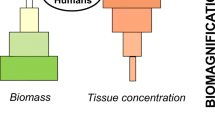Abstract
The importance of the current conditions of environmental pollution from chemical substances and their environmental impact statement are provided here. The problems of the current test methods (i.e., examinations of single species) and the need for having many kinds of organisms examined are expounded. With this in mind, the summary and effectiveness of the microcosm test are shown and are the main purpose of this book.
Access this chapter
Tax calculation will be finalised at checkout
Purchases are for personal use only
Similar content being viewed by others
Literature Cited
Beyers RJ, Odum HT. Ecological microcosms. New York: Springer; 1993. 557pp.
Graney RL, Kennedy JH, Rodjers JH Jr. Aquatic mesocosm studies in ecological risk assessment. Boca Raton: Lewis Publishers; 1994. 723pp.
U.S. Environmental Protection Agency. Microcosms as potential screening tools for evaluating transport and effects of toxic substances; Athens, Athens, U.S. Environmental Protection Agency; 1980. 370pp.
U.S. Environmental Protection Agency. Microcosms as test systems for the ecological effects of toxic substances; an appraisal with cadmium, Athens, U.S. Environmental Protection Agency; 1981. 171pp.
U.S. Environmental Protection Agency. Community structure, nutrient dynamics, and the degradation of diethyl phthalate in aquatic laboratory microcosms; Athens, U.S. Environmental Protection Agency; 1982. 135pp.
Author information
Authors and Affiliations
Corresponding author
Editor information
Editors and Affiliations
Rights and permissions
Copyright information
© 2020 Springer Nature Singapore Pte Ltd.
About this chapter
Cite this chapter
Inamori, Y., Inamori, R. (2020). Introduction. In: Inamori, Y. (eds) Microcosm Manual for Environmental Impact Risk Assessment . Springer, Singapore. https://doi.org/10.1007/978-981-13-6798-4_1
Download citation
DOI: https://doi.org/10.1007/978-981-13-6798-4_1
Published:
Publisher Name: Springer, Singapore
Print ISBN: 978-981-13-6797-7
Online ISBN: 978-981-13-6798-4
eBook Packages: Earth and Environmental ScienceEarth and Environmental Science (R0)




